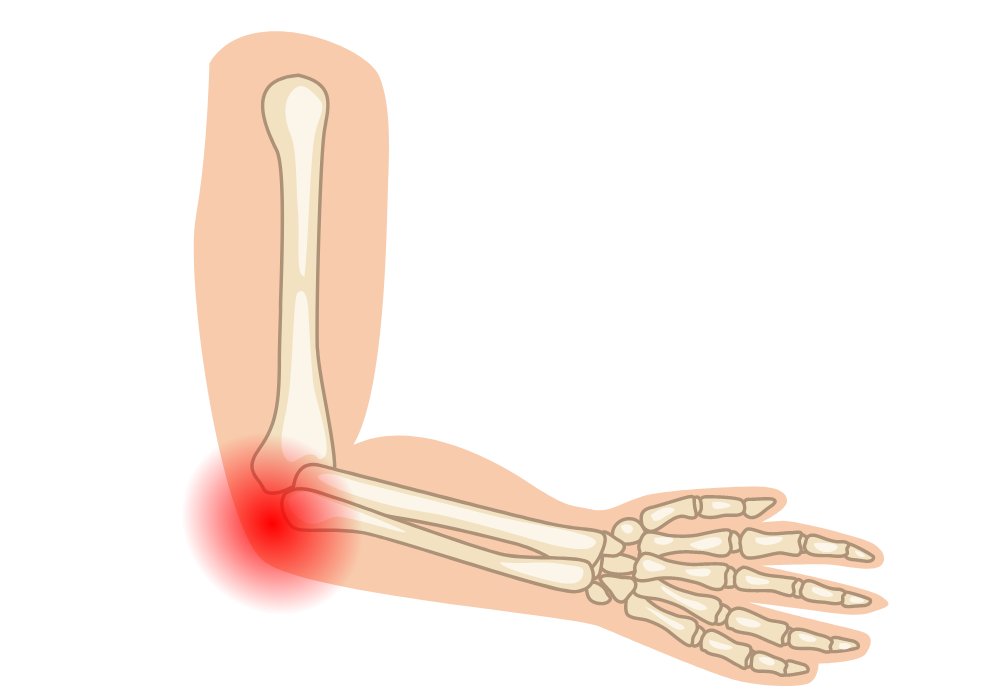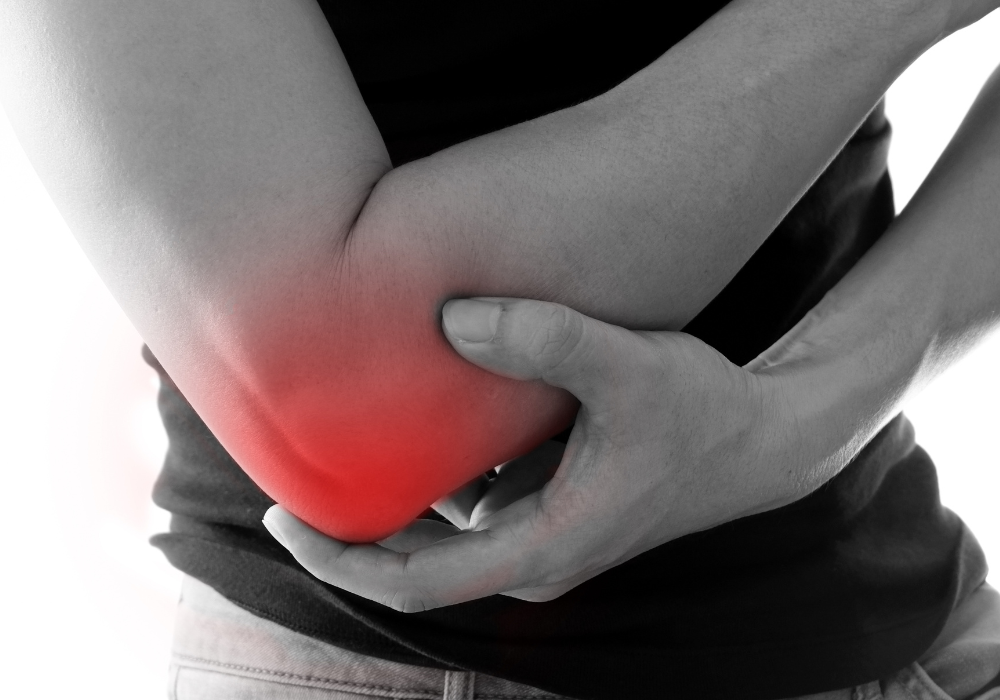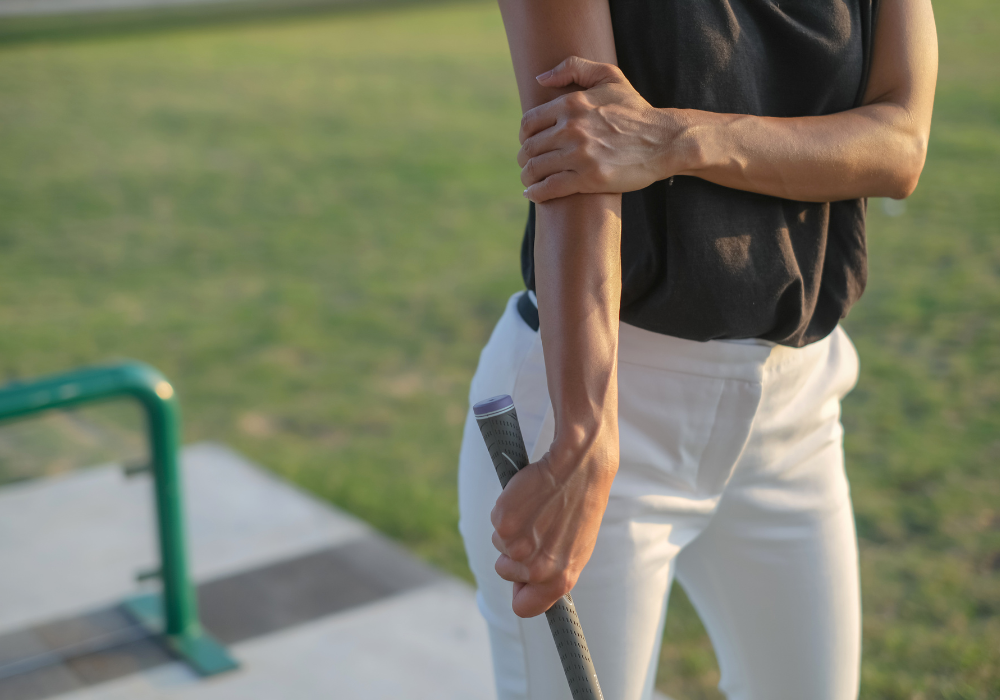Tennis Elbow
Let’s understand Tennis Elbow
Tennis Elbow
Tennis elbow, though commonly associated with its namesake sport, is a prevalent affliction among athletes engaged in various activities requiring repetitive arm motions. This condition, clinically termed lateral epicondylitis and manifests when the tendons in the elbow endure excessive strain, typically from repetitive wrist and arm movements. Here’s a comprehensive look at tennis elbow in the context of sports injuries, including its causes, symptoms, and strategies for recovery:

Rotator Cuff Tear
A rotator cuff tear is a prevalent condition when you are in the field of sports particularly among athletes engaged in activities that demand repetitive overhead motions or sudden, forceful movements.
Let's’ explore the causes:
Athletes participating in sports characterized by repetitive arm motions are particularly susceptible to developing tennis elbow, formally known as lateral epicondylitis. These sports often involve frequent and forceful use of the forearm muscles, placing repetitive stress on the tendons surrounding the elbow joint. Some common sports associated with tennis elbow include:
Despite its name, tennis elbow is not limited to tennis players, but the sport’s repetitive racquet swings, particularly single-handed backhands, can significantly contribute to this condition. The repeated swinging motion during a golf swing, especially when gripping the club tightly, can strain the tendons in the elbow, leading to microtears and inflammation. Pitchers and other players who frequently throw the ball are prone to developing tennis elbow due to the repetitive overhead motions involved in pitching, throwing, and catching. Certain weightlifting exercises, such as curls, bench presses, and overhead presses, can also stress the tendons in the elbow, especially when performed with poor technique or excessive weight. Drawing and releasing a bowstring repeatedly can strain the forearm muscles and tendons, particularly in the elbow, contributing to the development of tennis elbow.



What are symptoms ?
Recognizing the signs and symptoms of tennis elbow is crucial for early intervention and effective management. Individuals with tennis elbow often experience a dull, aching pain on the outer part of the elbow, which may worsen during physical activity, particularly when performing tasks that involve gripping or lifting. Weakness in the affected arm is common, making it difficult to execute sports-specific movements that require grip strength or fine motor control. Athletes may notice stiffness and discomfort in the elbow joint, particularly upon waking in the morning or after periods of rest, which can impact performance and range of motion. Palpation of the lateral epicondyle, the bony prominence on the outer side of the elbow, may elicit tenderness or sensitivity, indicating inflammation and irritation of the tendons in the area.
Early recognition of these symptoms allows athletes to seek appropriate treatment and modify their training routines to prevent further exacerbation of the condition. Prompt intervention can help alleviate pain, restore function, and facilitate a timely return to sport.
Treatment and Rehabilitation
For athletes grappling with tennis elbow, a multifaceted approach to treatment and rehabilitation is essential for optimal recovery and a swift return to sport.
Engaging in tailored exercises to stretch and strengthen the forearm muscles, bolster flexibility, and enhance overall joint function. Eccentric exercises, focusing on controlled lengthening of the muscles, are particularly beneficial. Employing counterforce braces or straps to mitigate strain on the tendons during sports activities, providing additional support and stability to the affected area. Incorporating ice and heat therapy into the recovery regimen to alleviate pain, reduce swelling, and promote tissue healing.
Surgical Intervention:
In cases where non-surgical treatments fail to provide adequate relief or when there is extensive tendon damage, surgical intervention may be recommended to address tennis elbow. Surgical procedures aim to repair or reconstruct the damaged tendons, alleviate symptoms, and restore optimal function to the elbow joint.
Arthroscopic Surgery:
Arthroscopic surgery is a minimally invasive procedure that offers several advantages, including smaller incisions, reduced risk of complications, and quicker recovery times compared to open surgery. During arthroscopic surgery for tennis elbow, specialized instruments and a tiny camera (arthroscope) are inserted through small incisions around the elbow joint. This allows the surgeon to visualize the damaged tendons and surrounding structures in detail. Using miniature surgical tools, the surgeon can then remove damaged tissue, release scar tissue, and promote healing of the affected tendons. Arthroscopic surgery is often preferred for less severe cases of tennis elbow or when the damage is localized and amenable to this approach.
Open Surgery:
Open surgery is reserved for more complex cases of tennis elbow or when arthroscopic surgery is not feasible. This procedure involves making a larger incision over the elbow joint to directly access the damaged tendons and surrounding structures. Open surgery provides the surgeon with greater visibility and access to the affected area, allowing for a more thorough assessment and repair of the damaged tendons. During open surgery, the surgeon may remove damaged tissue, repair or reattach torn tendons using sutures or anchors, and address any underlying structural abnormalities contributing to the condition. While open surgery may require a longer recovery period compared to arthroscopic surgery, it is often necessary for cases involving extensive tendon damage or when there are associated complications that cannot be adequately addressed with a minimally invasive approach.
Recovery time:
Recovery time following surgical treatment for tennis elbow varies but typically spans several stages:
1. Immediate Postoperative Period:
Focus on pain management and protecting the surgical site with a splint or brace.
2. Early Rehabilitation (Weeks 1-6):
Gradual reintroduction of movement and gentle exercises to restore range of motion. Physical therapy sessions begin, focusing on reducing swelling and preventing stiffness.
3. Mid-Term Rehabilitation (Weeks 6-12):
Advanced rehabilitation with targeted exercises to strengthen muscles, improve flexibility, and enhance joint stability. Sport-specific drills may be introduced under supervision.
4. Late Rehabilitation and Return to Activity (Months 3-6+):
Transition to more aggressive strengthening and functional training. Gradually return to sports and other activities, with a focus on achieving optimal strength and minimizing the risk of re-injury.
Post-Surgical Rehabilitation:
Following surgical intervention, a structured rehabilitation program is paramount to restore function and facilitate a safe return to sport. Initially, athletes may require immobilization with splints or braces to protect the surgical repair and promote healing. Gradually reintroducing elbow movements and sports-specific exercises under the guidance of a physical therapist to rebuild strength, flexibility, and endurance.
Continuously managing pain and monitoring recovery progress to ensure optimal outcomes and minimize the risk of complications.
For athletes grappling with tennis elbow, seeking guidance from a sports medicine specialist or orthopedic surgeon is important to develop a personalized treatment plan and navigate the road to recovery with confidence.
Schedule An Appointment
Elevate your performance with Apex Sports Clinic! Schedule an appointment today for personalized, expert care in optimizing your athletic potential.


APEX SPORTS CLINIC
Search Here
Book An Appointment
Quick Links
Contact us
- Email Address
- admin@apexsportsclinic.sg
- Address
- #18-12, Royal Square Medical Center,101 Irrawaddy Road, Novena, Singapore 329565
- Phone
- +6587745468
- Address
- #03-03/04, i12 Katong, 112 East Coast Road, Singapore 428802
- Phone
- +6583219004
APEX SPORTS CLINIC
Search Here
Book An Appointment
Quick Links
Contact us
- Address
- #18-12, Royal Square Medical Center,101 Irrawaddy Road, Novena, Singapore 329565
- +6587745468
- Address
- #03-03/04, i12 Katong, 112 East Coast Road, Singapore 428802
- +6583219004
- Email Address
- admin@apexsportsclinic.sg

APEX SPORTS CLINIC
Quick Links
Search Here
Book An Appointment
Contact Us
- Email Address
- admin@apexsportsclinic.sg
- Address
- #18-12, Royal Square Medical Center,101 Irrawaddy Road, Novena, Singapore 329565
- Phone
- +6587745468
- Address
- #03-03/04, i12 Katong, 112 East Coast Road, Singapore 428802
- Phone
- +6583219004